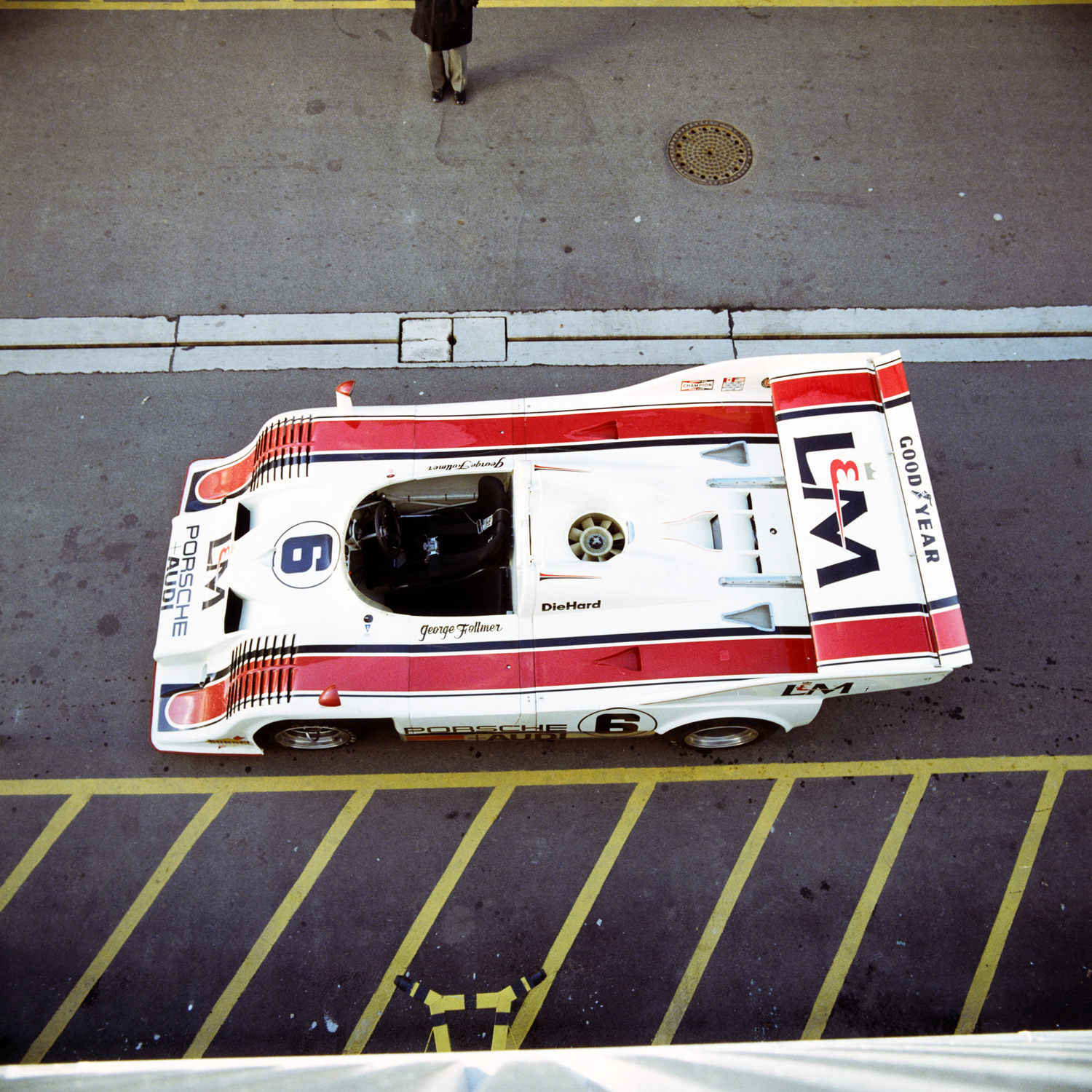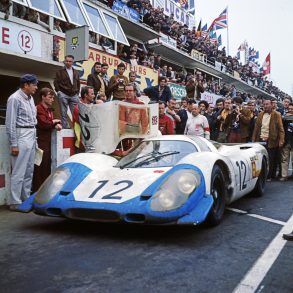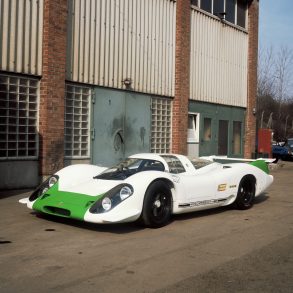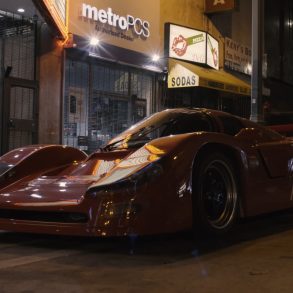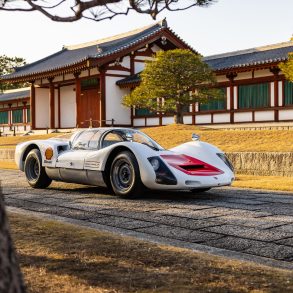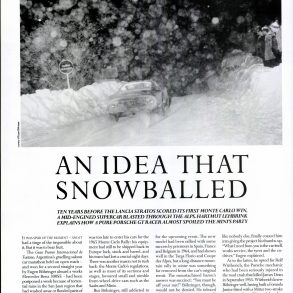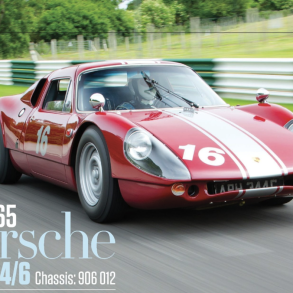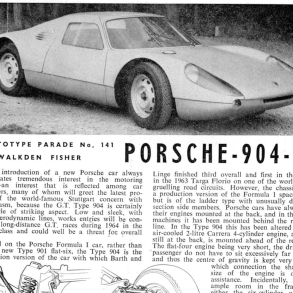Porsche 917/10 Turbo (1972)
Premiere: 1972 June 11 at Can-Am Mosport / Year: 1972 / Achievements: Can-Am winner 1972, Interserie winner 1972, 1973 / Engine: 12-cylinder V 180˚ twin turbo / Displacement: 5,374 ccm / Output: 846 kW (1,150 PS) / Weight: 837 kg / Top speed: 360 km/h
In Porsche’s Own Words
Following the runaway success of the 917 in the 1970 and 1971 World Sportscar Championships, Porsche takes on a new challenge: the motorsport department develops an open-top version of the 917 – the 917/10 – for the Can-Am series in the US and Canada.
Porsche pioneers the development of race engines with exhaust gas turbochargers in response to the high-volume V8 engines of its US competitors, long before turbocharger technology appears in Formula One in 1977. Fitted with a turbo engine delivering 1,000 PS, the 917/10 starts its first race on 11 June 1972 at the Mosport Park circuit in Canada. On 9 July ((8 July according to Näher’s book and other documents)) the car takes its first victory at the Road Atlanta circuit. With its 5-litre turbo engine, the Porsche 917/10 beats its US competitors to victory in six races out of nine during the 1972 season. Porsche defends its world title superbly in the following year too, with the 917/10 and its successor 917/30, the latter of which is equipped with a turbo engine featuring a larger 5.4-litre displacement and delivering 1,150 PS.
The 917/10 also competes in the European Interserie racing series in 1972 and 1973, winning the championship in both years with Finnish driver Leo Kinnunen. On 13 July 1972, the vehicle with chassis number 917/10-005 is delivered to the Penske racing team without a chassis, engine or body – only a frame with the full electrical kit and fire extinguishing system.
Engines
| 4.5 L Flat 12 twin-turbo | 625 kW |
| 5.0 L Flat 12 twin-turbo | 735 kW |
| 5.4 L Flat 12 twin-turbo | 820 kW |
Note: the power figures are highly speculative on turbocharged cars
In 1971, when it was clear that large engines would be banned from 1972 Manufacturers’ World Championship, Porsche focused on Can-Am championship for the 1972 season. Naturally they needed winning cars and knew that they need more power from their engines. Remember, the Can-Am dominating McLarens had 8.1-litre engines. Always thinking big, engineer Ferdinand Piëch let to develop a 16-cylinder engine in 1971 that was tested in the 917 Spyder prototype. The experimental turbocharged 12-cylinder was also created. The engineers soon realized that it was easier to pump out the power from the turbocharged 12-cylinder than from the normally aspirated 16-cylinder. The turbo-power was not ready by the beginning of the 1972 racing season, so the first races were competed with naturally aspirated 917/10.
The first ever publically seen turbocharged Porsche was the 917/10 Turbo with chassis number 917/10-011. It was entered for the June 11, 1972 Can-Am Mosport race. Mark Donohue was fastest in the qualification with it, but scored second in the 80 laps race after the 8.1-litre McLaren. The Porsche Turbo era had begun. Eight 917/10 were racing in 1972 in Can-Am and in Interserie. Four of them started their careers as 917/10 Turbo (chassis 001, 003, 005 and 011) and four were 917/10 with turbo conversions. The originally normally aspirated 917/10 that were fitted with turbo engines, performed well, but to win, they also needed the bodywork from the 917/10 Turbo.
The Turbos dominated on both shores of the Atlantic and there were even three dates in the season, when not only the race was on the same day on both shores, but was also won there by Porsche on the same day. It was a world domination – with the power output of around 1000 hp, the 917/10 Turbo easily won the 1972 Interserie and Can-Am championships. The European star was Leo Kinnunen of Keimola Racing Team AAW and the American star was George Follmer of Penske Racing.
For the 1973 season, Porsche built four more 917/10 Turbos and they continued to win side by side with the new 917/30.
In 1973, the Interserie was again won by Leo Kinnunen and his 917/10 Turbo. The first two races of the 1973 Can-Am were also won with the 917/10 Turbo (chassis 005), before the 917/30 took over as the leader and won the rest of the races.
The chassis numbers of the 917/10 were assigned irregularly. 018 was the last chassis, but 008, 009, 012, 013 and 014 were never made. The turbocharged 917/10 was also called as the 917/10 K. The last victory for the car came at the first round of the 1974 Interserie race at Silverstone. The successor to the 917/10 Turbo was the 917/30. In addition, there was one hybrid version between the 917/10 and the 917/30, known as the 917/20 Turbo (not to be confused with the 917/20 Le Mans).
Experiencing a Porsche 917 around the Nürburgring
President of West Germany, Dr. Gustav W. Heinemann, had had a dream to experience a 917 around the Nürburgring and the day for the dream-come-true was scheduled for April 3, 1973. Dr. Heinemann was to be seated next to Willy Kauhsen in the 917/10 Turbo. Everything was planned, just that the snow came down.
Willy Kauhsen knew the track wasn’t fully covered with snow and with the car equipped with rain tyres he was ready to go. Dr. Heinemann was also eager to go, but his security guys insisted him not to go, aswell as did his wife. Mister president, at the age of 73, was determined and stepped into the car, in the business suit and coat, not in racing overalls. He put the helmet on and off they went. Photoshooting was now forbidden, so there are no photos of the president in the car or on the track. Although the security guys who had entered the track before Kauhsen/Heinemann had landed in the ditch, the 917 guys were able to achieve 280 km/h (~175 mph) on the Döttinger Höhe-Antoniusbuche straight.
Kauhsen told that in the race he would go there at 350 km/h (~220 mph). Driving in the ‘safe mode’ the lap time was about 12:30. In the race condition it would be 8:20 in wet and 7:30 in dry. Mr. president was so amazed by the experience and sincerely thanked mr. Kauhsen for the experience which he considered the best in life.
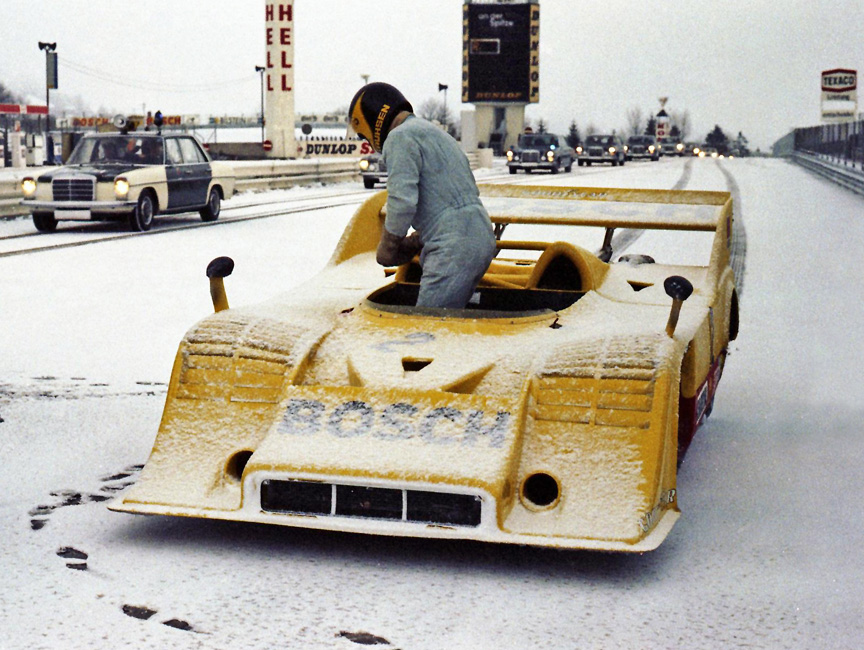
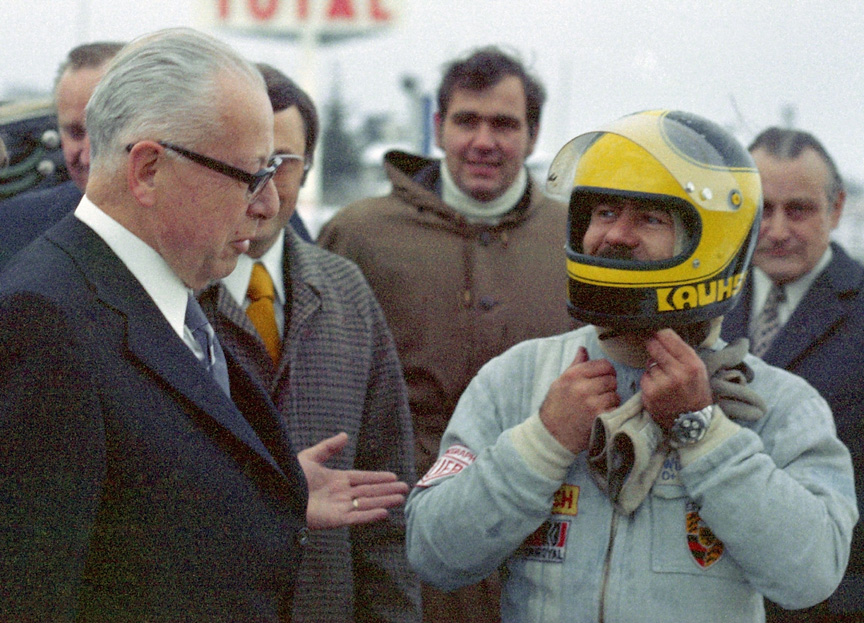
How Fast Was The 917/10 Turbo?
To understand how fast the first Turbo-Porsche was, Willy Kauhsen described the 5.0-litre version as: “0-100 km/h in 2.2 seconds, 0-200 km/h in 5.4 and 0-300 km/h in 11.1 seconds.” 1973 Interserie Nürbugring and Imola race winner Willy Kauhsen describes the acceleration of his 917/10 Turbo 5.0


